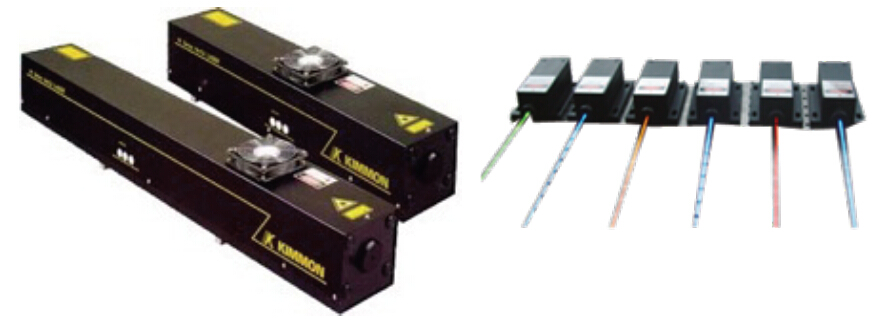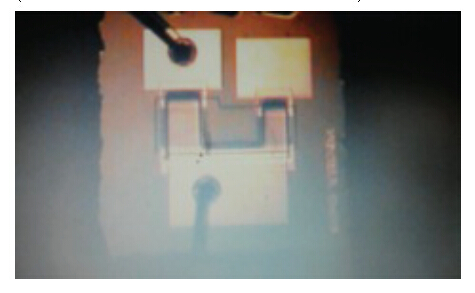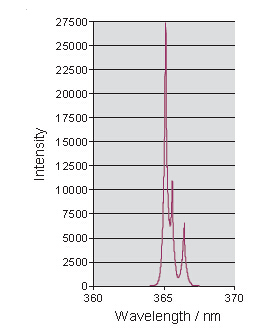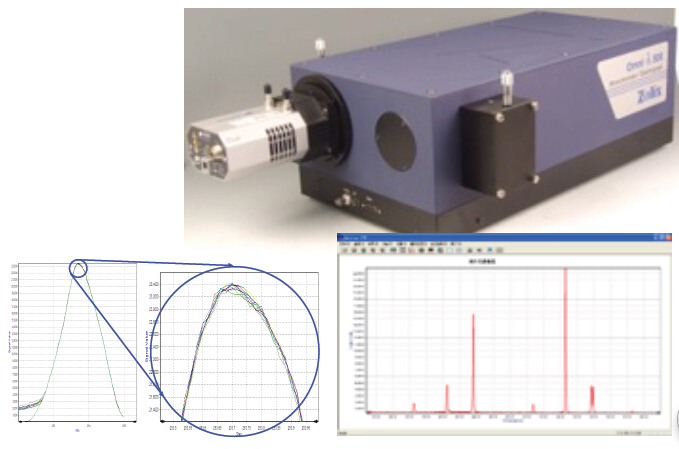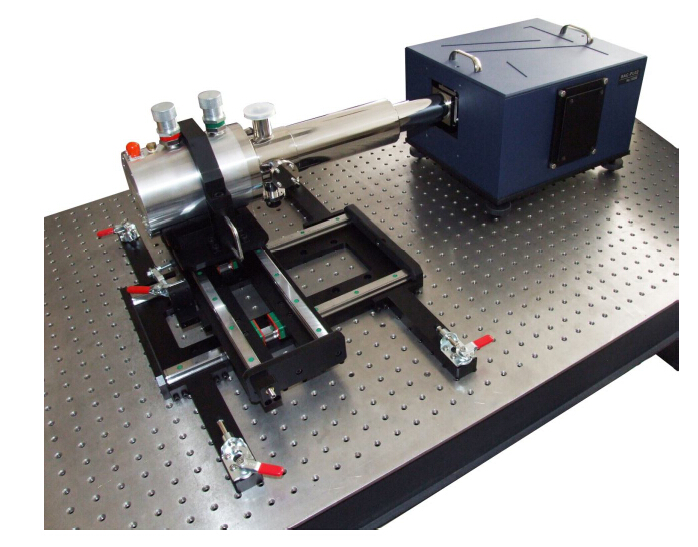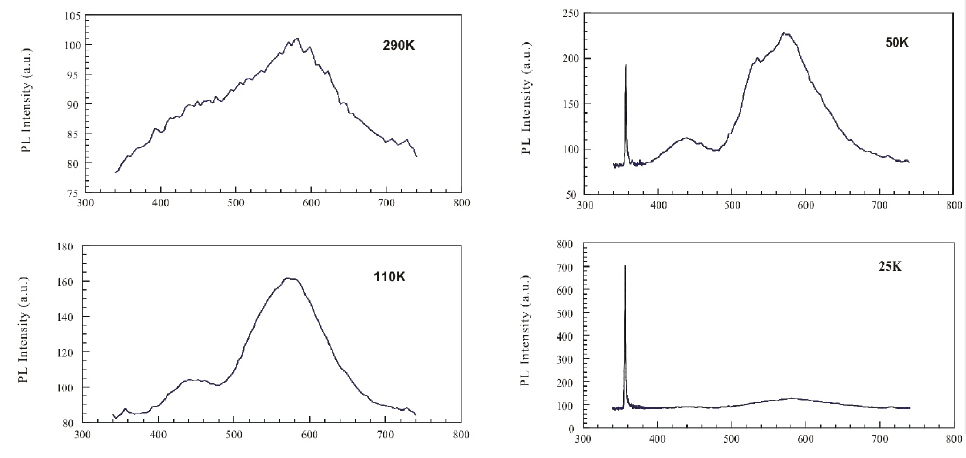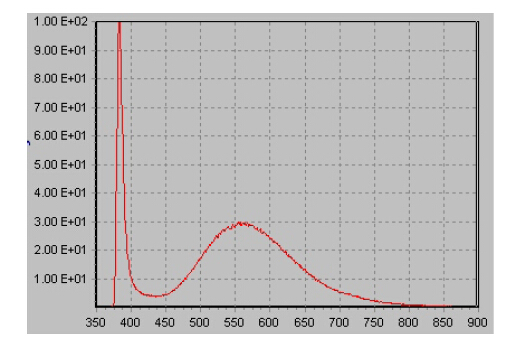Photoluminescence (PL) is the light emission from a material under the excitation by ultraviolet, visible or near infrared radiation. In semiconductor luminescent property measurements, the sample (e.g. GaN, ZnO, GaAs etc.) was usually excited by a laser (with a wavelength of 325 nm, 532 nm, 785 nm etc.), and its PL spectrum is measured to analyze the optical physical properties, such as the band gap width
etc.. Photoluminescence is a high sensitivity, non-destructive analysis method, which can provide the information about the structure, composition and surrounding atomic arrangement of materials. Therefore, it is widely used in physics, materials science, chemistry and molecular biology and other related fields.
Traditional Photoluminescence microscopic spectrometers are combination of standard microscopes and fluorescence spectrometers, but there are many limitations on PL spectra measurements with the traditional microscope. No flexible access to switch the laser needed in the experiments (especially for UV lasers, no suitable accessories), no convenient matching approach to cryogenic refrigeration machine, extremely low coupling efficiency when using fiber as the light collecting device, are all unavoidable problems while standard microscopes are applied.
Zolix Instruments Co. Ltd. provides OmniPL-MicroS Photoluminescence microscopic spectrometer, based on our experience in fluorescence spectroscopy and spectroscopic system designing over the past decade base on the actual demands of the users, which effectively solved the problems above. And it is currently the most cost-effective microscopic photoluminescence measurement solution on the market.
(Product pictures for reference only, the actual system configuration shall prevail)
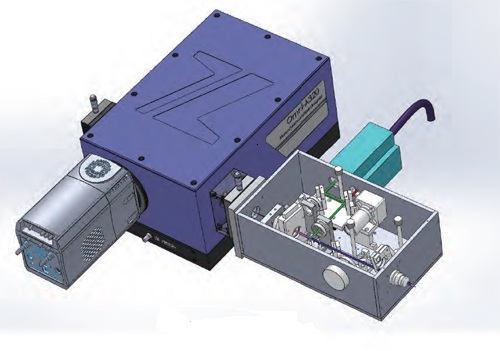 |
Performance characteristics
1.The integration of optical layout -- all optical elements adjustments is only needed in the initial installation, to ensure the efficiency and easy using
2.Double light path design – easy to switch the horizontal and vertical optical path, for application on all kinds of sample morphology
3.Ultra-wide spectra range -- 200nm-1600nm
4.Video monitoring light path -- for accurate sampling point adjustment
5.Unique correction function of Emission spectra -- to make the spectral measurements more accurate and comparable
6.Multiple excitation wavelength optional -- 325nm, 405nm, 442nm, 473nm, 532nm, 633nm, 785nm etc.
7.Automatic mapping function optional -- 50mm × 50mm measurement range, or customized special specifications
8.Electroluminescent (EL) feature optional -- extended options
9.Microscopic Raman spectroscopy measurement optional -- extended options
10.Ultra low temperature measuring accessories optional -- providing measurements at ultra low temperature under 10K
* optional items; please consult us for more details
* * configuration shall be determined according to the actual needs.
Table
| The main type | OmniPL-MicroS |
| The spectral range | 200-1600nm |
| Spectral resolution | 0.1nm |
| Excitation wavelength options | 325nm, 405nm, 442nm, 473nm, 532nm, 633nm, 785nm etc. |
| Detector | type | cooled CCD | cooled
InGaAs | Single
point PMT | Single point cooledInGaAs |
| The effective spectral range | 200-1100nm | 800-1600nm | 200-870nm | 850-1600nm |
| The spatial resolution | <100um |
Note *: All above are the basic specifications, detailed specifications varies from different configuration options,
please consult us for detailsSystem compositionOmniPL-MicroS photoluminescence microscopic spectrometer system comprises:1.Excitation source part: lasers of various wavelengths from UV to near-infrared bands
2.Microscopic optical path part: specific microscopic optical path of optimization design
3.Spectra acquisition part: imaging calibrated spectral and high sensitive scientific grade CCD or single point detector and data acquisition device
4.Sample holding part: XYZ three-dimensional adjustable sample holder (manual or automatic), ultra low temperature sample table
A. Excitation source partIn the PL spectra measurement applications, laser is believed as the most ideal excitation source, with the features of high intensity, collimation and color purity. OmniPL-MicroS photoluminescence microscopic spectrometer provides lasers with multiple wavelengths from ultraviolet to near infrared band, applicable to different application requirements.
Table
| SN | Wavelength
(nm) | Power
(mW) | Spatial Mode(TEM) | Beam
Diameter(mm) |
| A1.1 | 325 | 15-50 | 00 | ~1.2 |
| A1.2 | 405 | 50-200 | Near00 | ~40 |
| A1.3 | 442 | 30-100 | 00 | ~1.2 |
| A1.4 | 473 | 30-100 | 00 | ~2.0 |
| A1.5 | 532 | 50-300 | 00 | ~2.0 |
| A1.6 | 633 | 15-50 | Near00 | ~3.0 |
| A1.7 | 785 | 150-500 | Near00 | ~5X8 |
| Note: laser power is optional, please consult us for details |
A. Microscopic optical path
OmniPL-MicroS PL microscopic spectrometer has an originally designed optimized microscopic light path, with special designed switchable light path. the user may conveniently switch between multiple excitation wavelength on the same light path, with the help of two or more excitation light sources, laser filters, dichroic mirrors and other high-quality imported optical components.
Testing light path OmniPL-MicroS PL microscopic spectrometer has a double optical path design, freely switchable between the horizontal and vertical optical path, applicable to different kinds of common sample morphology.
Table
| SN | Name | Wavelength
(nm) | Detection Range
(nm*) | Spatial Resolution(um) |
| 20X | 40X(50X**) | 100X |
| B1.1 | 325nm laser | 325 | 350-800 | <100 | <50 | - |
| B1.2 | 405nm laser | 405 | 460-800 | <100 | <50 | <25 |
| B1.3 | 442nm laser | 442 | 460-800
(670-1600nm) | <100 | <50 | <25 |
| B1.4 | 473nm laser | 473 | 480-950
(670-1600nm) | <100 | <50 | <25 |
| B1.5 | 532nm laser | 532 | 550-950
(670-1600nm) | <100 | <50(**) | <25 |
| B1.6 | 633nm laser | 633 | 650-830(670-1600nm) | - | <100(**) | <50 |
| B1.7 | 785nm laser | 785 | 810-1100nm | - | <100(**) | <50 |
| Note: The listed fluorescence detection ranges are all typical values, and are dependent on the effective range of the selected optical elements, lens and detectors, please contact ! |
(Graph: determining the test spot on samples using the monitoring light path)
A. Spectra Acquisition
OmniPL-MicroS PL microscopic spectrometer, equipped with high-resolution image calibrated grating spectrometer (focal length of 500mm), and high quality large area gratings, can provide better spectral resolution and optical throughput efficiency. If necessary, reflection element with AR coating can be chosen to specifically enhance the light collection efficiency of the UV region. Detector could be high performance scientific grade deep refrigeration back light CCD or photon counting photomultiplier tube and refrigerated InGaAs detector (required with data acquisition devices such as photon counters or lock-in amplifiers).
To match with some special applications, The OmniPL-MicroS PL microscopic spectrometer can also provide emission spectra correction, making sure the accuracy of the fluorescence measurements, and the mutual comparability among different samples, please contact us for details!
(Graph: the difference of fluorescence spectrum curves before and after correction)
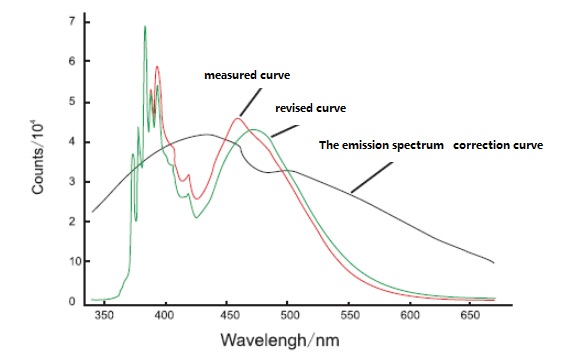 |
| | Name | Features |
| C1.1 | Triple spectrometer | Focal length: 500mm, image correction, the relative aperture (F Number) f/6.5, spectral range: 200-2500nm, spectral resolution: 0.05nm (the practical features depend on the grating parameters and practical conditions) |
| C2.1 | Grating1-240-300-NP | 2400g/mm,200-600nm,68x68mm |
| C2.2 | Grating 1-120-300-NP | 1200g/mm,200-600nm,68x68mm |
| C2.3 | Grating 1-120-500-NP | 1200g/mm,350-1100nm,68x68mm |
| C2.4 | Grating 1-060-500-NP | 600g/mm,330-1000nm,68x68mm |
| C2.5 | Grating 1-030-500-NP | 300g/mm,300-1000nm,68x68mm |
| C2.6 | Grating 1-150-500-NP | 1500g/mm,300-1100nm,68x68mm |
| C2.7 | Grating1-060-1200-NP | 600g/mm,800-2400nm,68x68mm |
| C2.8 | Grating1-030-1200-NP | 300g/mm,800-2200nm,68x68mm |
| C3.1 | High resolution Cooled CCD
| Back thinned, effective pixels 2000x256, pixel size 15x15um, maximum refrigeration temperature -95℃, and peak quantum efficiency>95% |
| C3.2 | Cooled CCD | Back thinned, effective pixels 1024x127, pixel size 26x26um, maximum refrigeration temperature -80℃, and peak quantum efficiency >95% |
| C4.1 | Refrigerated InGaAs PDA | Linear array, effective pixels 1024, pixel size 25x500um, maximum refrigeration temperature -90℃, Peak quantum efficiency>85% |
| C5.1 | PMT | 200-870nm, Side-window, Low Dark counting |
| C6.1 | cooledInGaAsdetector | 850-1700nm, TE cooling, sensitive diameter |
| C7.1 | Single Photon counter | effective counting efficiency:>5Mcps |
| C7.2 | Lock-in amplifier | Digital lock-in amplifier with optical chopper |
Note: the emission spectra correction function are not supported in all configuration, please consult us for details!
High spectral reproducibility
High spectral resolution
High spectral accuracy
A. The sample holding parts
The OmniPL-MicroS PL microscopic spectrometer can provide many kinds of sample holder bracket to adapt to the needs for different application tests.
| SN | Name | Features |
| D1.1 | Standard XYZ
3D manual sample table | Sample table suitable for all kinds of solid samples, three dimensional manual adjustable, with the monitoring light path used to determine test spot |
| D2.1 | Automatic
XY sample table | Z axis adjustable, XY directions automatic scanning, mapping measurement supported, standard scanning range: 50mm * 50mm |
| D3.1 | Ultra-low temperature sample table. | Providing ultra-low temperature measurement down to 10K, with manual adjustment on XY directions, convenient for sample changing |
Graph: ultra low temperature sample table with two dimensional adjusting device
Application:
PL Spectra of GaN material under different refrigeration temperatures
Excitation wavelength: 325nm, Excitation power: 20mW, lowest refrigeration temperature: 10K
PL spectrum of ZnO material
The excitation wavelength: 325nm; ZnO thin film samples have a particularly strong fluorescence band at 382nm, and a weak fluorescence band in 500~600nm. By studying these bands, the effect of ZnO surface state on the fluorescence and information of crystal form and defects can be revealed.
 13910278534
13910278534
 010-56370168
010-56370168
